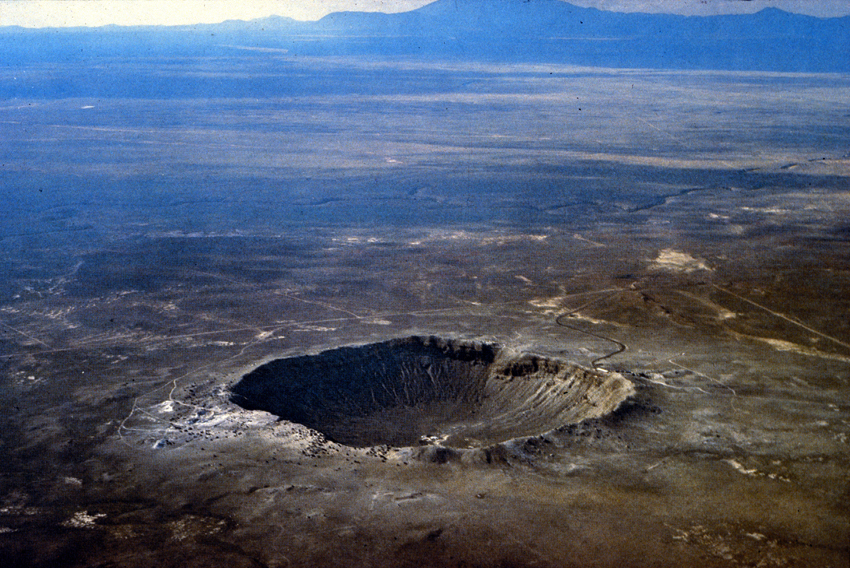Throw your own asteroids to see how craters form!
Build mini-asteroids and see how impact craters are formed on the Earth's surface!

You will need:
- 2 small jars of modelling clay of different colours (brown, black or white)
- 1 large shallow pan/tray with edges
- 2 cups of white baking flour (or any white powder: baking soda, coconut flower, etc.)
- ½ cup of cocoa (or any coloured powder: dry drink powder, coffee, etc.)
- A flour sifter or a sieve
How to recreate the Earth's surface
- Pour the flour (or other white powder) evenly into your pan or tray. This will be Earth's crust.
- With the sifter, dust a thin layer of cocoa powder (or other coloured powder) over the flour. This represents the soil of the planet.
Bonus: you can add dinosaurs to recreate Earth 65 million years ago!

Artist concept of an asteroid at a time when dinosaurs roamed the Earth.
How to build your asteroids
Mix the two colours of modelling clay with your hands to build three asteroids of different shapes and sizes. Be careful, they cannot be bigger than your pan!
How to transform your asteroids into meteorites
- Hold your first asteroid 40 to 50 cm above the pan
- Drop it: as it impacts the Earth, it becomes a meteorite!
- Carefully remove the meteorite and observe the crater (the hole) created. The material that was ejected is called "ejecta."
- Repeat with your other asteroids!

Mini-impact craters on an Earth-like surface! (Credit: CSA)
How it works
An asteroid is classified as a meteorite if it impacts the Earth. Meteorites do not usually stay intact after impacting the Earth, so scientists estimate their original size by observing the crater and the "ejecta." As you noticed, the crater is always bigger than the meteorite itself. The biggest crater discovered was almost 200 km in diameter, and its meteorite was the one that, many scientists believe, caused the dinosaurs to go extinct 65 million years ago!
Rest assured: the odds of an asteroid this size impacting us again are minimal. Asteroid Bennu is the biggest asteroid that has a risk of impacting the Earth in a couple hundred years, and it is 500 m in diameter. The OSIRIS-REx mission, which Canada is part of, consists in bringing a small sample from Bennu back to Earth. This will allow scientists to see what this asteroid is made of, and get more information to help us prevent a collision with our planet!
